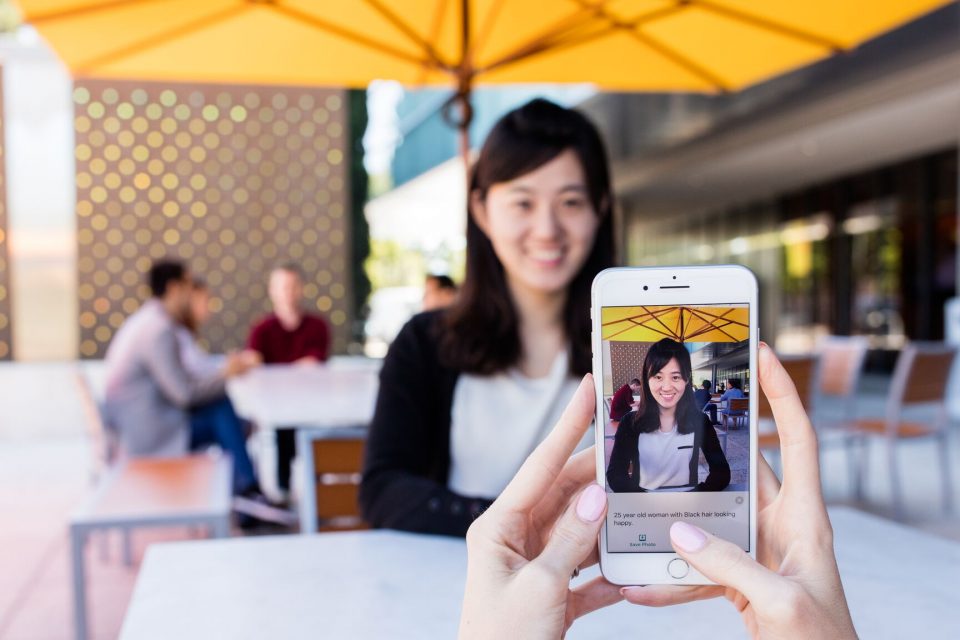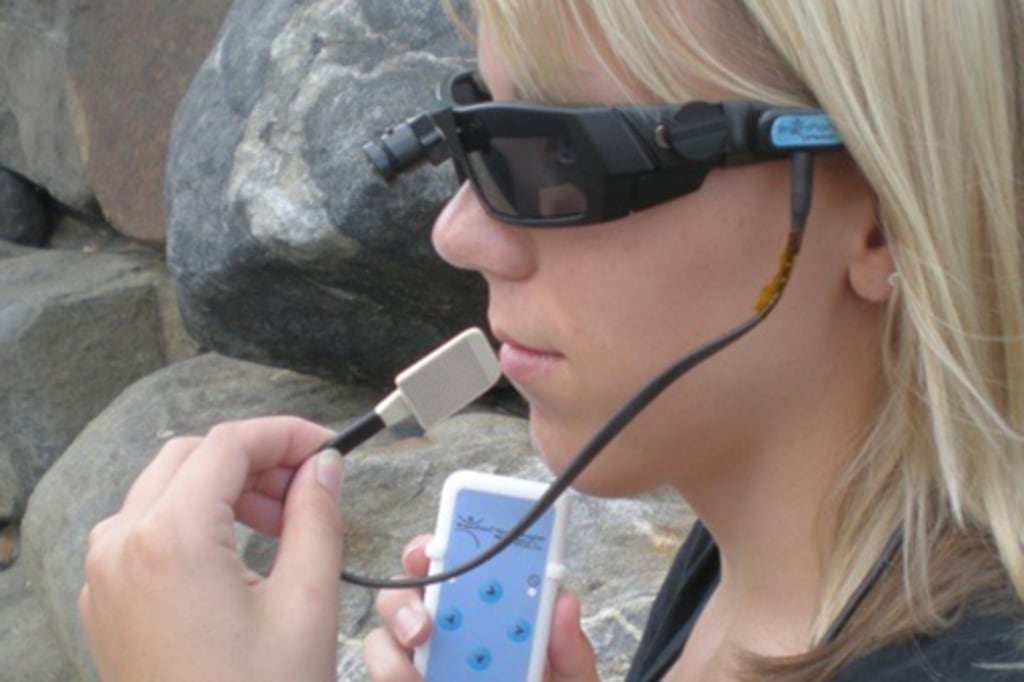Wearable Technology for Low Vision: Making Daily Life Easier
Wiki Article
Discover Innovative Devices Developed for the Aesthetically Damaged
The development of innovative devices for the aesthetically damaged represents a substantial innovation in availability and freedom. Technologies such as smart glasses with AI capabilities and mobile applications made to offer auditory descriptions are reshaping daily experiences for individuals. Additionally, wearable devices that use haptic comments boost ecological recognition, while modern Braille developments offer brand-new means to involve with text. As these tools proceed to evolve, their effect on the lives of those with visual problems increases essential inquiries concerning the future of inclusivity and autonomy in various aspects of life. What exists ahead in this technological landscape?Smart Glasses for Navigation

Smart glasses made for navigation are reinventing the method visually impaired individuals interact with their environment. These sophisticated tools make use of a mix of camera technology, artificial knowledge, and acoustic feedback to offer real-time information concerning environments. By utilizing barrier detection systems, clever glasses can notify customers to possible risks, allowing more secure flexibility in both acquainted and strange settings.
The combination of GPS innovation better boosts navigation abilities, allowing individuals to get acoustic instructions as they relocate. This hands-free approach not only promotes self-reliance however also empowers aesthetically damaged individuals to navigate urban landscapes with enhanced self-confidence. In addition, several clever glasses are furnished with features that identify spots and road signs, offering contextual information that enhances the individual experience.
Additionally, the advancement of these tools is continuously advancing, with business working to enhance the precision of item recognition and increase the variety of navigational functions. As wise glasses become a lot more budget-friendly and obtainable, they hold the prospective to substantially change everyday life for visually damaged customers. Eventually, these ingenious devices stand for an important action toward inclusivity, offering enhanced mobility and a higher sense of autonomy for individuals navigating the globe around them.

Mobile Apps for Daily Living
Exactly how can mobile applications boost the lives of aesthetically impaired people? Mobile applications are revolutionizing the way visually damaged users browse their atmospheres, take care of daily jobs, and access info. These applications provide crucial support via different capabilities, promoting independence and enhancing high quality of life.Several ingenious mobile apps are designed especially for day-to-day living. Apps like Be My Eyes link visually impaired individuals with sighted volunteers through video telephone calls, permitting them to obtain real-time help with jobs such as checking out labels or navigating unknown areas. Seeing AI, developed by Microsoft, utilizes synthetic knowledge to explain environments, checked out message, and recognize objects, successfully changing a mobile phone into a powerful tool for day-to-day support.
In addition, navigation applications customized for the aesthetically impaired, such as Aira and BlindSquare, offer audio-based instructions and ecological details, making it possible for individuals to traverse their environments safely and with confidence. Beyond navigation and instant assistance, mobile apps additionally support company and job management, with features that aid users establish reminders, produce to-do checklists, and track appointments. In summary, mobile applications offer as vital sources, encouraging visually damaged people to lead even more independent and satisfying lives.
Wearable Technologies for Aid
Empowerment via innovation is increasingly apparent in the realm of wearable gadgets developed to aid aesthetically damaged people. These cutting-edge tools integrate seamlessly into life, improving navigating and giving crucial responses to users. Clever glasses geared up with cams can recognize faces and review message out loud, permitting individuals to interact more confidently in social and specialist setups.An additional significant advancement is making use of haptic comments systems in wearable devices. These systems utilize resonances or various other responsive signals to convey info about the individual's setting, such as barriers or adjustments in terrain, improving movement and safety and security. Wearable technologies additionally include wristbands that connect to smart devices, informing users to notices through subtle vibrations, thus boosting connectivity without reliance on aesthetic signs.
As these innovations remain to advance, they are not only enhancing self-reliance for visually impaired people but additionally cultivating a greater feeling of inclusion in culture. By bridging the void in between difficulties faced in daily living and the capacity for autonomy, wearable technologies function as pivotal devices in the mission for equality and empowerment for those with visual disabilities.
Audio Description Devices
Sound summary devices play a vital role in improving accessibility for aesthetically damaged individuals, giving them with the ability to involve with visual media. Wearable technology for low vision. These devices offer narrated summaries of key aesthetic elements in movies, television shows, and live efficiencies, making sure that customers can completely comprehend the context and emotions communicated with visualsSound description can be integrated right into numerous systems, consisting of streaming solutions, cinema screenings, and live cinema. Lots of prominent streaming services now consist of audio summary as an accessibility function, allowing viewers to choose it easily. Along with mainstream media, specialized applications also exist, supplying audio summaries for art exhibitions, museums, and other social occasions.
The efficiency of audio summary hinges on the skill of the narrators, who should convey visual information succinctly without diminishing the original sound. Developments in this area are likewise leading the way for more personalized experiences, where users can readjust the degree of detail and pacing according to their choices.
Braille Innovations and Devices
Braille devices and innovations have actually dramatically changed the means visually impaired people engage with message and information. Modern developments have led to the advancement of functional devices that boost literacy and self-reliance amongst customers.
In addition, portable Braille notetakers incorporate standard Braille input with contemporary functionalities, helping with note-taking, scheduling, and file editing and enhancing on the go. Smart glasses for the visually impaired. These small gadgets typically feature text-to-speech abilities, connecting the space between Braille and acoustic info
In addition, ingenious YOURURL.com Braille printers have actually arised, allowing individuals to produce Braille tags, papers, and educational materials successfully. This page access fosters better engagement in instructional and expert atmospheres, ultimately advertising inclusivity.
Additionally, research study right into smart Braille innovations remains to increase. Instruments that integrate fabricated intelligence are being checked out to supply real-time navigation aid and contextual info, boosting the customer experience in diverse settings. Overall, these developments show a commitment to empowering aesthetically damaged people via technology, ensuring they can conveniently access and engage with the globe around them.

Verdict
The innovation of ingenious devices for the aesthetically damaged considerably boosts independence and top quality of life. These innovations not just foster higher inclusion however additionally promote freedom in daily tasks, inevitably adding to a more fair and obtainable culture for visually damaged people.As clever glasses become extra accessible and affordable, they hold the potential to dramatically transform daily life for visually impaired users. Mobile applications are revolutionizing the way visually impaired individuals browse their environments, manage day-to-day tasks, and access info. Applications like Be My Eyes connect aesthetically impaired users with sighted volunteers via video phone calls, enabling them to get real-time support with jobs such as you can check here reading tags or browsing unfamiliar rooms.Furthermore, navigating applications customized for the aesthetically damaged, such as Aira and BlindSquare, use audio-based directions and environmental information, enabling users to traverse their surroundings securely and with confidence.The advancement of ingenious devices for the aesthetically damaged dramatically enhances independence and top quality of life.
Report this wiki page